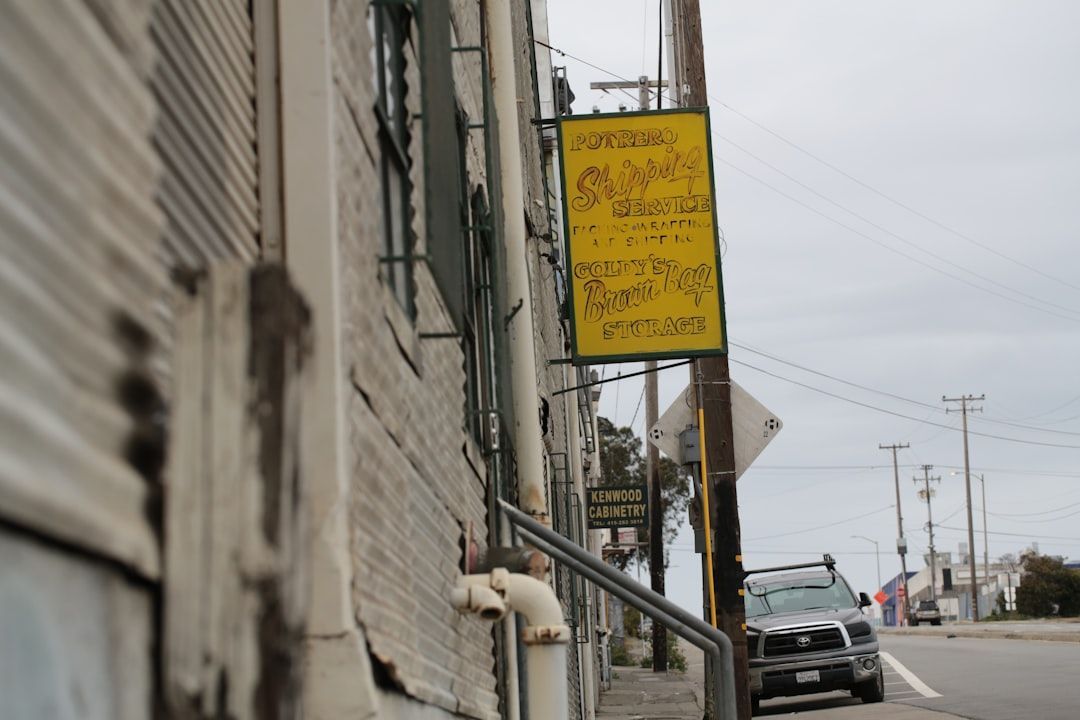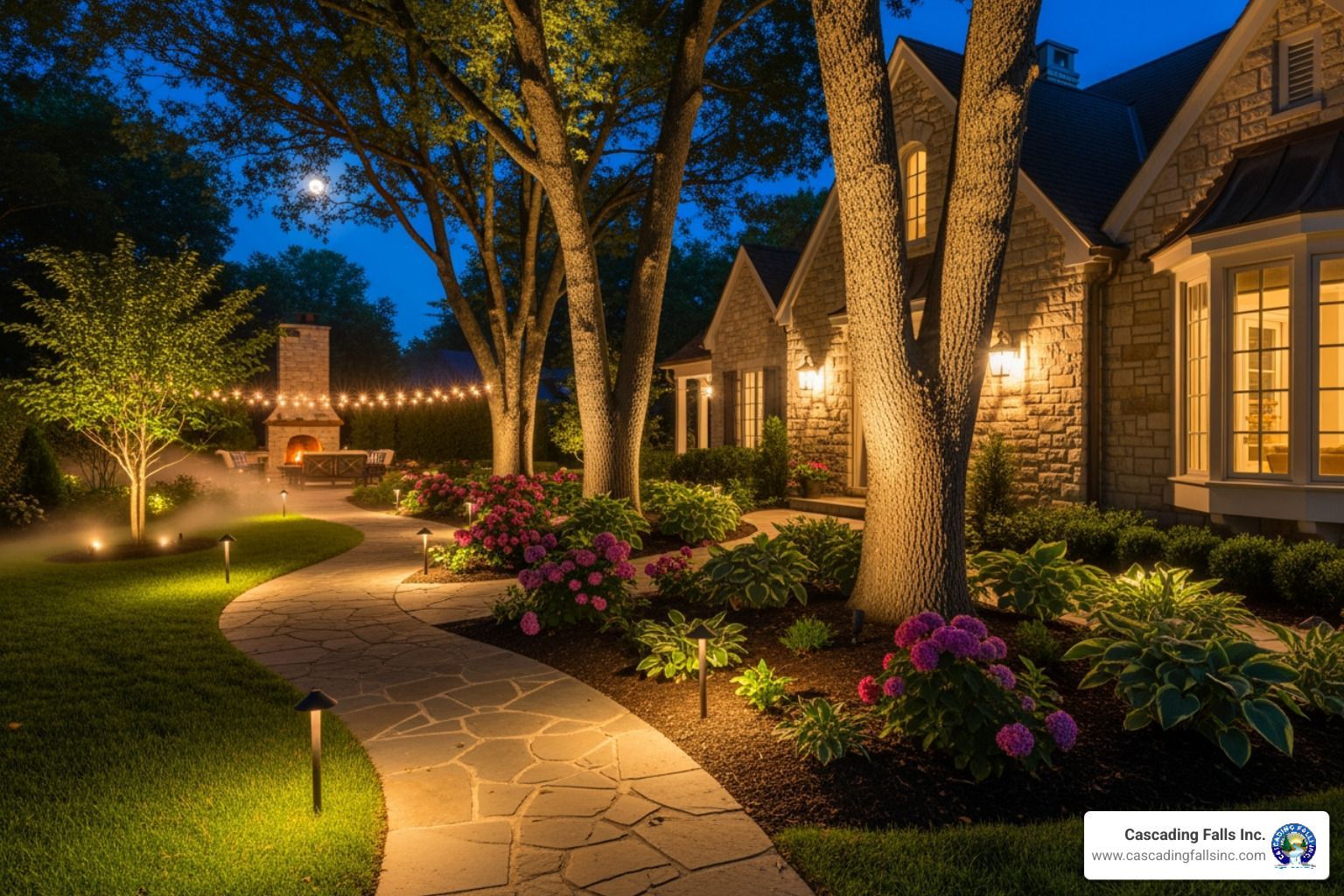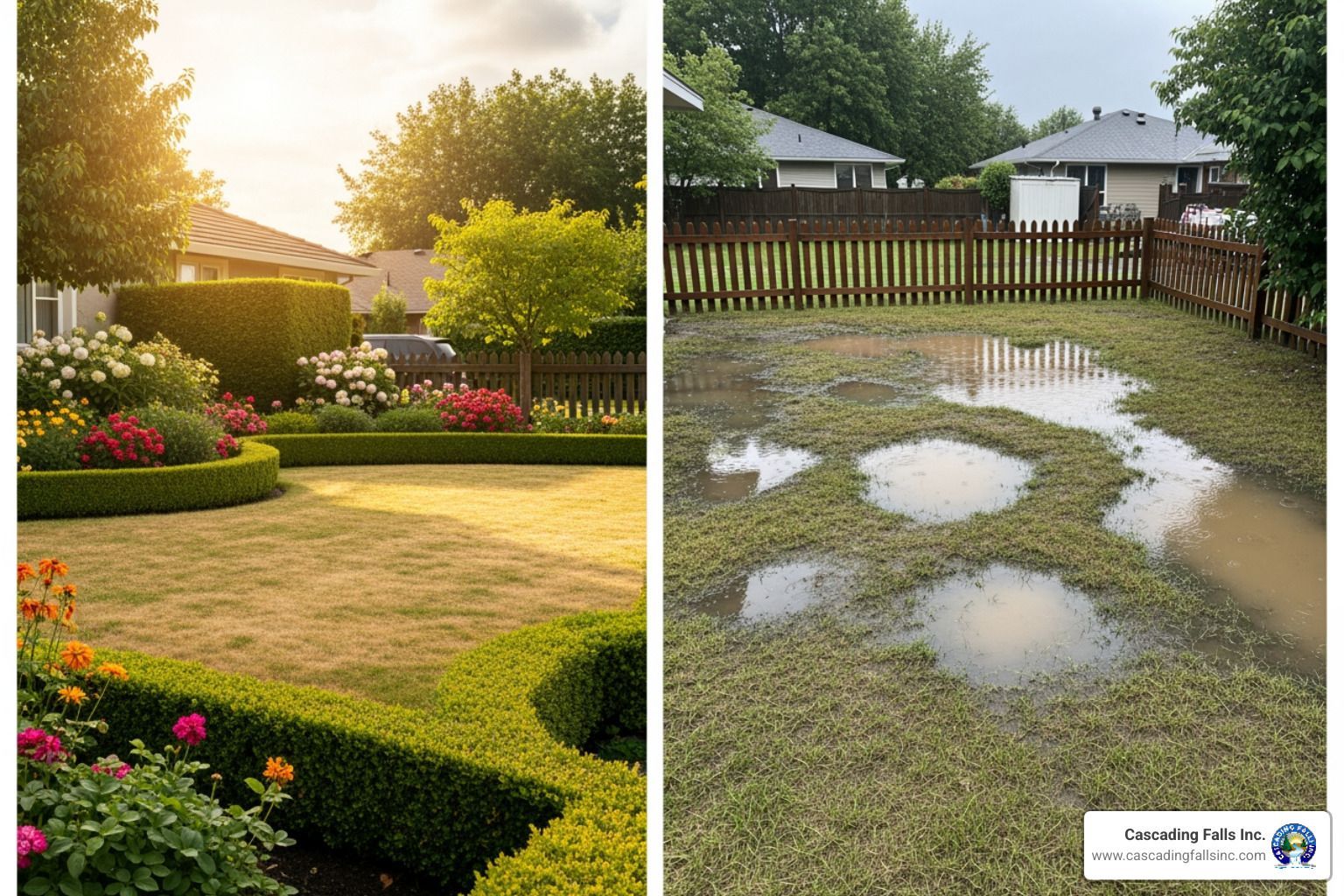Why Metal Building Construction is Revolutionizing Modern Building Projects
Metal building construction has become the dominant choice for low-rise commercial and industrial projects, accounting for over 65% of all construction in this sector. This surge in popularity stems from three key advantages that traditional building methods simply can't match:
Key Benefits of Metal Building Construction:
- Cost Savings: 10-20% less expensive than traditional construction methods
- Speed: Construction timelines reduced by 20-40% compared to conventional building
- Durability: Metal roofing systems can last up to 50 years with minimal maintenance
- Versatility: Suitable for warehouses, offices, schools, churches, and residential applications
The construction process involves pre-engineered metal buildings (PEMBs) that are designed and fabricated off-site, then assembled on location using standardized components. This approach eliminates much of the guesswork and delays common in traditional construction while delivering superior strength and weather resistance.
From small storage buildings to large manufacturing facilities, metal construction offers clear-span designs that maximize usable interior space without interior columns. The steel components are recyclable and fire-resistant, making them both environmentally responsible and insurance-friendly.
I'm David Shelly, and with nearly two decades of experience in construction since 2005, I've witnessed how metal building construction has transformed the industry through improved efficiency and reliability. My background in project management and installation gives me deep insight into why these systems consistently outperform traditional building methods.
Understanding Metal Building Types and Classifications
Not all metal building construction projects are created equal. Think of it like cars – you wouldn't use a sports car to haul lumber, and you wouldn't use a pickup truck for a race. The same logic applies to metal buildings, where different classifications and construction types serve specific purposes based on safety requirements, building codes, and intended use.
Understanding these distinctions isn't just technical jargon – it's the foundation that determines everything from your project's safety features to its final cost. Let's break down what you need to know.
Building Code Classifications: Fire Safety and Materials
When architects and engineers design buildings, they must follow strict fire safety classifications that dictate which materials can be used and how the structure must be built. For metal buildings, you'll typically encounter two main classifications: Type 1 and Type 2 construction.
Type 1 Construction represents the gold standard of fire resistance. These are fire-resistive buildings designed to withstand extreme heat for extended periods without losing their structural integrity. Picture a hospital or high-rise office building – these structures need to give people plenty of time to evacuate safely during an emergency.
The secret lies in the materials and protection methods. Type 1 buildings use fire-rated concrete and protected steel components, often with specialized fire rated joints that help contain fires to specific areas. While this level of protection comes at a higher cost, it's absolutely essential for certain applications where human safety is paramount.
Type 2 Construction takes a different approach, focusing on non-combustible materials rather than extended fire resistance. Most metal buildings fall into this category, and for good reason – it strikes an excellent balance between safety and cost-effectiveness.
In Type 2 construction, the steel and concrete components won't fuel a fire, but they may not resist collapse as long as Type 1 buildings. This makes them perfect for warehouses, manufacturing facilities, and commercial buildings where the fire risk is manageable and the cost savings are significant. When combined with proper sprinkler systems and safe construction access for emergency responders, Type 2 buildings provide excellent protection.
| Feature | Type 1 Construction (Fire-Resistive) | Type 2 Construction (Non-Combustible) |
|---|---|---|
| Fire Rating | Highest; designed to resist fire for extended periods | High; materials are non-combustible but may have lower fire ratings |
| Materials | Fire-rated concrete, protected steel | Unprotected steel, concrete |
| Applications | High-rise buildings, hospitals, large public assembly structures | Warehouses, manufacturing plants, commercial buildings, schools |
| Cost | Generally higher due to extensive fire protection | More cost-effective than Type 1 while maintaining high safety |
The Main Types of Metal Building Construction by Cascading Falls Inc.
Beyond fire safety classifications, metal buildings are also categorized by their structural systems. At Cascading Falls Inc., we work with three main approaches, each with its own strengths and ideal applications.
Light-Gauge Steel Framing is like the Swiss Army knife of metal building construction. We take thin steel sheets and cold-form them into C or U-shaped sections that pack surprising strength into a lightweight package. These cold-formed steel sheets are perfect for commercial and light industrial projects where precision and efficiency matter most.
What makes light-gauge steel special is its versatility. We use it for everything from interior partitions to complete structural support systems. The steel resists pests, won't rot like wood, and goes up faster than traditional framing methods. Plus, the precision manufacturing means less waste and fewer surprises during construction.
Structural Steel Framing is our heavy-duty solution for projects that demand exceptional strength and wide-open spaces. We're talking about hot-rolled steel sections like I-beams and H-beams that can span incredible distances without interior columns getting in the way.
This approach shines in large-scale projects like manufacturing facilities, airplane hangars, and sports complexes. The steel's high ductility means it can bend under extreme stress without breaking – a crucial safety feature. Our expertise in Metal Building Structural Design ensures these robust systems are engineered perfectly for each specific application.
Pre-Engineered Metal Buildings (PEMBs) represent the sweet spot of modern construction efficiency. These buildings are designed and fabricated off-site in controlled factory conditions, then delivered to your location ready for assembly. It's like ordering a custom-built car – you get exactly what you need, manufactured to precise specifications.
PEMBs excel in applications like warehouses, agricultural structures, and commercial facilities where speed and cost-effectiveness are priorities. Don't let the "pre-engineered" name fool you – these aren't cookie-cutter buildings. We provide custom metal building solutions that can be custom to your exact needs, from simple storage facilities to architecturally complex structures that turn heads.
The beauty of PEMBs lies in their predictability. Because major components are manufactured in controlled conditions, you avoid weather delays and quality inconsistencies that plague traditional construction. The result is faster project completion, lower costs, and buildings that perform exactly as designed.
The Best Advantages of Metal in Modern Construction
There's a reason metal building construction has become the go-to choice for so many of our clients at Cascading Falls Inc. When you compare metal to traditional materials like wood and concrete, the advantages become crystal clear. Let me walk you through why metal consistently wins out in today's construction landscape.
Cost and Time Efficiency
Let's talk about what really matters to most property owners: your budget and timeline. Metal building construction delivers impressive savings that go straight to your bottom line. Studies show that pre-engineered metal buildings can result in cost-savings of 10-20% compared to traditional construction methods. That's not pocket change – it's a substantial difference that can make or break a project budget.
The magic happens through off-site manufacturing. While traditional construction involves cutting, measuring, and assembling materials on your property (with all the weather delays and waste that comes with it), metal building components are precision-manufactured in controlled factory environments. This means reduced material waste and fewer surprises when it comes to cost overruns.
But here's where it gets even better: the time savings are remarkable. Metal building construction can reduce construction timelines by 20-40% compared to conventional methods. Think about what that means for your business – you could be operational weeks or even months ahead of schedule.
This speed comes from the streamlined assembly process. Components arrive ready for installation with bolted connections that go together like a sophisticated puzzle. You don't need specialists from multiple trades working around each other. The reduced labor requirements mean fewer workers on site and less coordination headaches.
Durability, Safety, and Sustainability
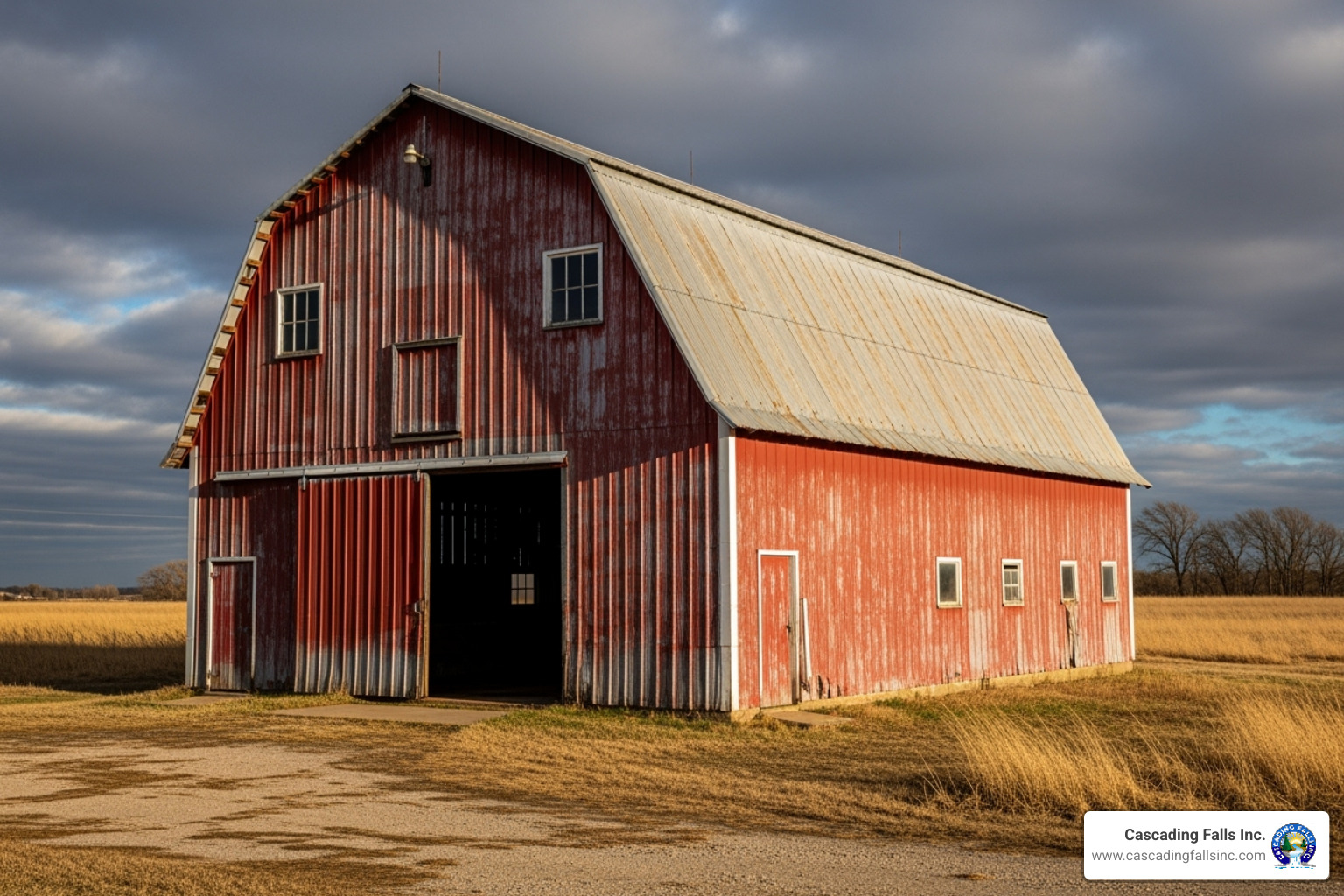
When you invest in a building, you want it to last. Metal delivers superior durability that simply can't be matched by traditional materials. Unlike wood structures that can rot, warp, or become termite buffets, steel buildings are pest and rot proof. This translates to fewer maintenance headaches and a much longer lifespan for your investment.
The numbers speak for themselves: metal roofing systems regularly achieve a 50-year roof life, far outperforming traditional materials. That's decades of protection without major replacements or repairs.
Fire resistance is another crucial advantage. Steel's non-combustible properties mean your building won't fuel a fire or contribute to its spread. This isn't just about property protection – it's about the safety of everyone who uses your building. In areas prone to wildfires, metal buildings can literally be lifesavers.
From an environmental standpoint, metal construction is a winner. Steel is completely recyclable, so your building won't end up in a landfill at the end of its useful life. The production process also requires lower energy consumption compared to other structural materials, reducing your project's overall environmental footprint.
Design Flexibility and Versatility
Here's where we bust the biggest myth about metal buildings: that they're all boring, boxy structures. Modern metal building construction offers incredible design possibilities that might surprise you.
The strength of steel enables clear-span design, creating vast unobstructed interior spaces without columns getting in the way. Imagine a warehouse where forklifts can move freely in any direction, or a community center with completely open floor plans. This design freedom is nearly impossible to achieve with traditional construction methods.
Customizable exteriors are where metal buildings really shine. You can incorporate architectural panels, brick, stone, glass, and wood finishes to create stunning facades. We've worked on projects ranging from beautiful office spaces to impressive school buildings that blend seamlessly with their surroundings.
The wide range of applications is truly remarkable. Metal construction works equally well for warehouses, retail spaces, churches, agricultural buildings, and even residential structures. During construction, we always prioritize safety by using OSHA compliant work platforms to ensure safe access to all areas of the structure.
Whether you're planning a simple storage facility or a complex multi-use building, metal construction gives you the flexibility to create exactly what you need – both functionally and aesthetically.
The Metal Building Construction Process from Start to Finish
Building a metal structure might seem complex, but it's actually a beautifully orchestrated process that we've refined over years of experience. At Cascading Falls Inc., we believe in transparency, which is why we walk our clients through every single step. There's something satisfying about watching a metal building construction project transform from a simple idea into a fully functional structure that will serve you for decades.
Phase 1: Planning, Design, and Permitting
Every great building starts with a conversation. We sit down with you to understand exactly what you need this structure to accomplish. Are you planning a warehouse to expand your business? Maybe an agricultural building to protect your equipment? Or perhaps a beautiful office space that reflects your company's values? This initial planning phase is where we really get to know your vision.
Once we understand your goals, we dive into the technical side of things. Our engineering team gets to work on the structural load calculations, considering everything from the weight of the building itself to potential snow loads and wind forces your area might experience. This is where our expertise in metal building design practices really shines - we've learned that getting these calculations right from the start saves everyone time, money, and headaches later.
The permitting process comes next, and honestly, it's not the most exciting part of the job. But it's absolutely crucial. We work directly with your local authorities to ensure everything meets building codes and zoning requirements. Having done this countless times, we know exactly what documentation is needed and how to steer any potential roadblocks.
Don't forget about financing during this phase. Many of our clients find it helpful to have their funding lined up before we break ground. Having approved plans and permits in hand often makes the financing process much smoother.
Phase 2: Site Preparation and Foundation for your metal building construction project
Now comes the part where things start to look real. Site preparation might not be glamorous, but it's the foundation of everything that follows - literally. We begin with land clearing, removing any obstacles, trees, or debris. Then comes grading and leveling, which is more art than science. Getting the drainage right during this phase prevents water problems that could plague your building for years.
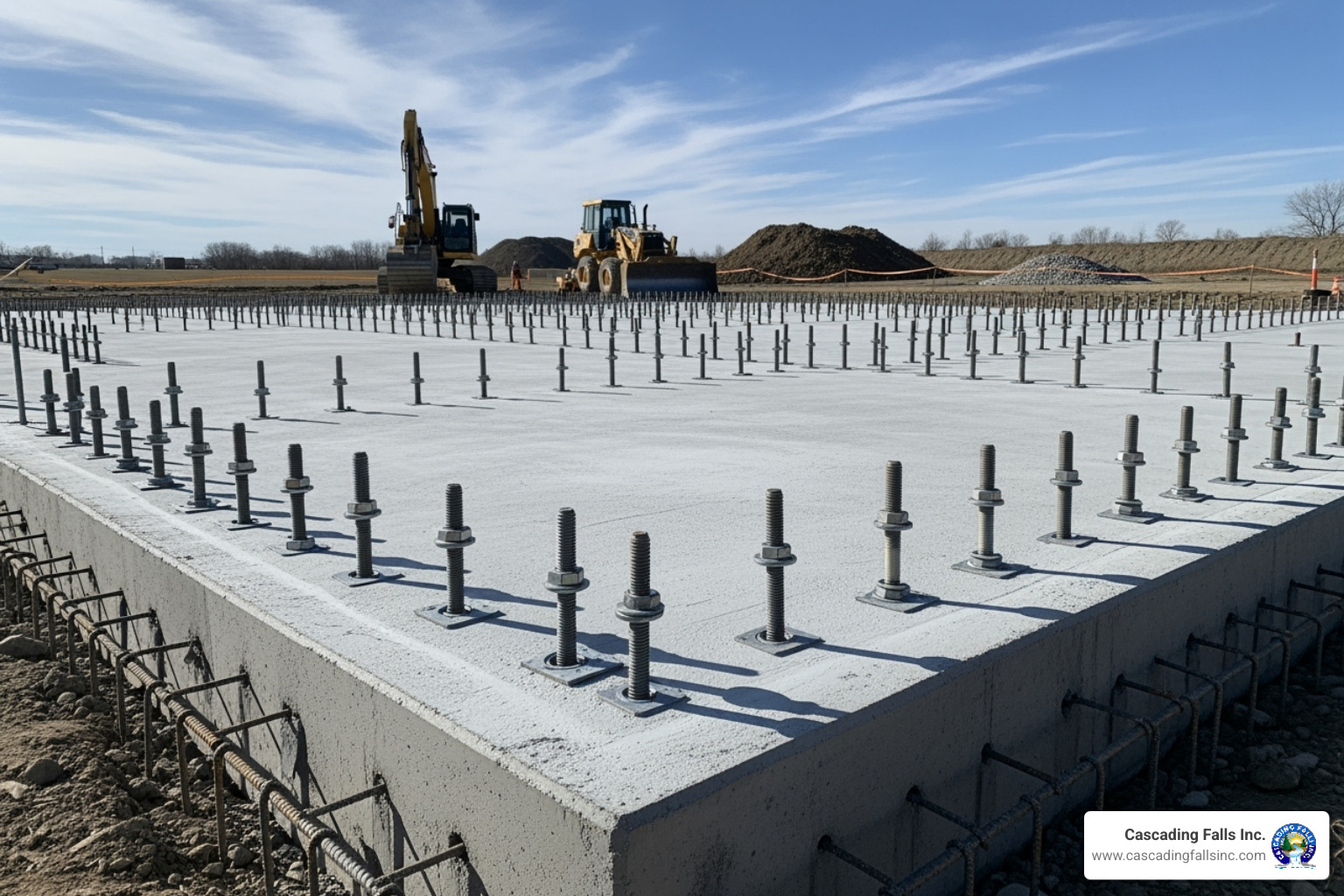
Foundation installation is where precision becomes absolutely critical. Depending on your building's requirements and soil conditions, we'll install either a concrete slab or a pier and beam system. The real magic happens with anchor bolt placement - these bolts need to be positioned with millimeter accuracy to match the pre-drilled holes in your metal framing.
One misplaced bolt can cause delays and extra costs, which is why we take extra care during this step. We often rely on the benefits of ready mix concrete to ensure consistent quality and precise quantities. There's no room for guesswork when you're setting the foundation for a structure that needs to last decades.
Phase 3: Erection and Finishing
This is the phase that gets everyone excited - watching your building rise from the ground up. When the fabricated components arrive on site, it's like receiving a giant, precisely engineered puzzle. Everything has been designed to fit together perfectly.
We start with primary framing erection, raising those distinctive "red-iron" steel columns and rafters that form your building's skeleton. There's something impressive about watching these massive steel components come together to create the basic structure. Next comes the secondary framing- the girts, purlins, and bracing systems that give your building its final strength and stability.
The building envelope installation transforms your steel frame into an actual building. Wall and roof panels go up with surprising speed, and suddenly you can see your structure taking its final shape. We follow proven metal building construction best practices to ensure every panel is perfectly aligned and weatherproof.
The finishing touches are where your building becomes uniquely yours. Doors and windows go in, followed by insulation that will keep your building comfortable and energy-efficient. Any interior build-out work - partitions, flooring, electrical, and plumbing - completes the change from steel frame to functional space.
Our "Whatever It Takes..." approach means we don't consider the job done until you're completely satisfied with every detail. From that first conversation about your needs to the moment you walk into your finished building, we're committed to delivering exactly what you envisioned.
Key Considerations for Your Metal Building Project
Planning a metal building construction project is exciting, but there are several important factors that can make or break your experience. Before you break ground, let's walk through the key considerations that will help ensure your project stays on budget, meets your long-term needs, and gets built by the right team.
Factors Influencing the Cost of Metal Building Construction
While metal buildings offer excellent value, understanding what drives costs helps you make informed decisions and avoid surprises down the road. Think of it like buying a car – the base model gets you where you need to go, but the options can add up quickly.
Building size and complexity naturally have the biggest impact on your budget. A simple 40x60 warehouse will cost significantly less than a multi-story office complex with custom architectural features. The beauty of metal construction is that even complex designs remain more affordable than traditional building methods.
Custom features can transform a basic structure into something truly special, but they come at a premium. Things like oversized bay doors, specialty windows, unique exterior finishes, or advanced HVAC systems all add to the final cost. The good news? These upgrades often pay for themselves through improved functionality and curb appeal.
One factor beyond anyone's control is steel price fluctuations. Like any commodity, steel prices can shift based on market conditions. We stay on top of these trends and work with our suppliers to lock in favorable pricing whenever possible, protecting you from unexpected increases.
Your project location affects everything from labor costs to material shipping. A remote rural site might have lower land costs but higher transportation expenses. Similarly, local code requirements vary dramatically – a building in Minnesota needs to handle much heavier snow loads than one in Arizona, which means beefier structural components and higher material costs.
The finishing touches make a huge difference in both appearance and cost. Finishing options range from basic painted steel panels to premium architectural finishes that mimic brick, stone, or wood. Insulation choices span from standard fiberglass batts to high-performance insulated metal panels that dramatically improve energy efficiency. Finally, your interior build-out – whether you need basic open space or fully finished offices with restrooms and break areas – will be one of your largest cost variables.
Maintenance, Expansion, and Future Modifications
One of the smartest aspects of choosing metal building construction is how well these structures adapt to your changing needs over time. It's like investing in a building that grows with you rather than against you.
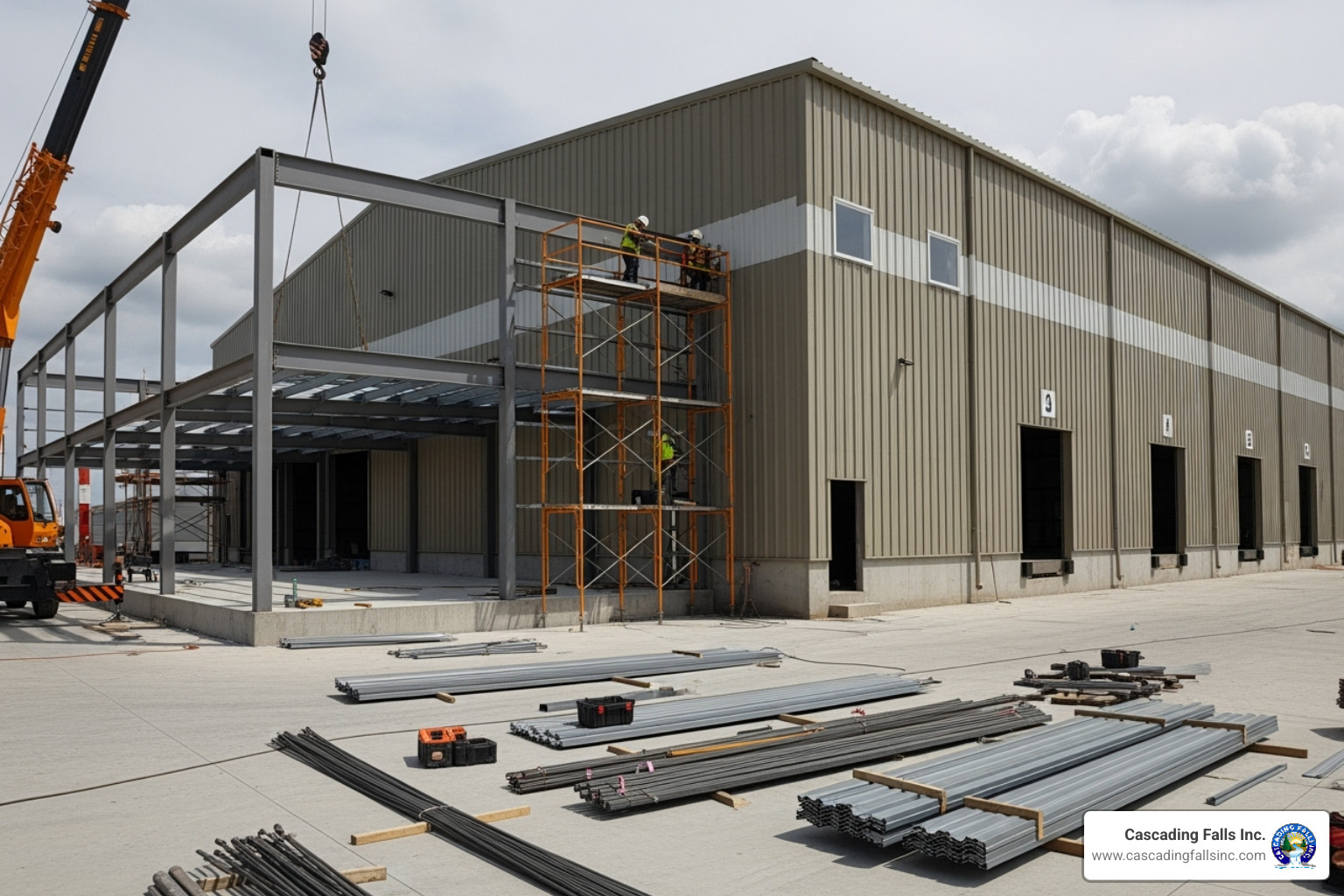
Metal buildings are refreshingly low maintenance compared to traditional structures. While wood buildings battle rot, warping, and pest problems, steel just keeps standing strong. Your annual maintenance routine is surprisingly simple: visual inspections to check for any loose bolts or minor wear, exterior cleaning to keep things looking sharp, and addressing any small issues before they become big problems.
The real magic happens when your business grows or your needs change. We can design your building with future expansion in mind, incorporating removable endwalls that make adding new bays almost effortless. Need to double your warehouse space in five years? No problem. Want to reconfigure your interior layout? Steel's strength means we can often remove walls and create new spaces without compromising the building's integrity.
This flexibility isn't just convenient – it's financially smart. Instead of moving to a new facility when you outgrow your current space, you can simply expand where you are. Many of our clients have added multiple additions over the years, creating sprawling complexes that started as simple single buildings. To learn more about our long-term approach to client relationships and how we support your growth, visit our About Us page.
Choosing the Right Contractor
Here's where many projects succeed or fail before the first bolt gets tightened. Choosing the right contractor for your metal building construction project isn't just important – it's everything.
You want a general contractor with specific experience in pre-engineered metal buildings. This isn't regular construction where you can wing it and figure things out as you go. Metal building erection requires understanding unique engineering principles, specialized assembly techniques, and the quirks of working with pre-fabricated components.
When vetting contractors, dig deep into their experience with PEMBs specifically. Ask to see photos of similar projects, and don't be shy about requesting references from recent clients. A good contractor will be proud to show off their work and put you in touch with happy customers.
Always verify insurance and bonding before signing anything. Metal building construction involves heavy equipment, large components, and significant liability exposure. You need a contractor who's properly covered, protecting both you and them if something goes wrong.
At Cascading Falls Inc., we bring nearly two decades of construction experience to every project, with a deep understanding of metal building systems and a "Whatever It Takes..." commitment to your success. We believe in transparent communication, detailed planning, and flawless execution. If you're ready to work with a team that treats your project like our own, please Contact Us to discuss your vision and how we can bring it to life.
Conclusion
After nearly two decades in construction, I can confidently say that metal building construction represents one of the smartest investments you can make for your next building project. The combination of speed, strength, and genuine cost savings isn't just marketing talk – it's what we see delivered on every job site.
Throughout this guide, we've explored how metal buildings can save you 10-20% on construction costs while cutting your timeline by up to 40%. We've seen how these structures can last 50 years or more with minimal maintenance, adapt to your changing needs through easy expansion, and provide the design flexibility to create everything from functional warehouses to beautiful office spaces.
The beauty of metal building construction lies in its simplicity and reliability. When you choose pre-engineered metal buildings, you're getting a system that's been refined over decades to eliminate the common headaches of traditional construction. No weather delays while waiting for materials to cure. No surprise cost overruns from material waste. No wondering if your building will stand up to the next storm.
Whether you're planning a commercial facility, industrial warehouse, agricultural building, or even a residential project, metal construction offers the durability and versatility to meet your needs. The clear-span designs maximize your usable space, the fire-resistant properties provide peace of mind, and the sustainable steel materials align with responsible building practices.
At Cascading Falls Inc., we've built our reputation on our "Whatever It Takes..." approach to bringing your vision to life. From that first planning meeting through the final walkthrough, our team is committed to delivering the quality and craftsmanship you deserve. We understand that your building isn't just a structure – it's an investment in your future.
Ready to find what metal building construction can do for your next project? Explore our comprehensive metal building services to get started today.

